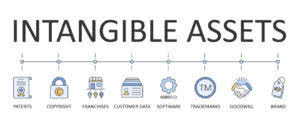Obsolescence Free Accounting Definitions & Terms

The company has to remove the inventory and reverse the allowance for obsolete inventory. The transaction will not impact the expense account on income statement as the company has already estimated and recorded the expense. This can be anything from products that are for sale to supplies and materials that are needed for production. The inventory includes raw material, working in process, and finished goods that are ready to sell to customers. These items will be recorded as the inventory which is the current assets on balance sheet.
Technology-Driven Obsolescence
- This means companies may be required to record a depreciation entry before the sale of the asset to ensure it is current.
- For example, in real estate, it refers to the loss of property value due to an obsolete feature, such as an old house with one bathroom in a neighborhood filled with new homes that have at least three bathrooms.
- GAAP requires companies to establish an inventory reserve account for obsolete inventory on their balance sheets and expense their obsolete inventory as they dispose of it, which reduces profits or results in losses.
- An alternative approach is to create a reserve based on the historical rate of obsolescence.
- The total cost listed on this report is $182,000, which is 19% of the total book value of the entire inventory.
- For example, an oil well would be depreciated based on the rate at which the oil is being extracted from it.
This inventory has not been sold or used for a long period of time and is not expected to be sold in the future. This type of inventory has to be written-down or written-off and can cause large losses for a company. Inventory obsolescence is a major issue that procurement professionals should be aware of. It can lead to significant financial losses and reduced efficiency in the supply chain. Understanding the different types of obsolescence and implementing effective management strategies can help organizations mitigate its negative impact.
Why You Can Trust Finance Strategists

For example, smartphones with outdated operating systems become obsolete as newer versions are released. You may know that a particular business asset is obsolete in general because you have replaced it with a newer model. In some cases, the tech companies actively put policies in place, such as refusing support or updates for old models, to make products functionally obsolete.
Financial Statement Impacts of Obsolete Inventory

Capital assets such as buildings, machinery, and equipment are useful to a company for a limited number of years. The entire cost of a capital asset is not charged to any one year as an expense; rather the cost is spread over the useful life of the asset. The main problem with the obsolete inventory percentage is figuring out which inventory to include in the numerator, since it can be difficult to define “recent” usage. Whatever method is chosen to define “recent” usage should be applied in a consistent manner, so that trends in the percentage can be more reliably tracked over time. The responsibility of establishing reserves for shrinkage, obsolescence, and excess inventory lies with each financial controller and supply chain manager, based on the recommended steps outlined in this guide. In the context of business, that printer I mentioned above is an obsolete asset.

Inventory is presented as the net balance which is the combination of inventory cost and allowance for obsolete. So when this journal reduces both accounts, it will not impact the total amount. The inventory obsolescence reserve is an accounting figure used to reduce the value of the company’s inventory balance to market value.
Accounting Methods for Obsolete Inventory by GAAP
My Accounting Course is a world-class educational resource developed by experts to simplify accounting, finance, & investment analysis topics, so students and professionals can learn and propel their careers. Shaun Conrad is a Certified Public Accountant and CPA exam expert with a passion for teaching. After almost a decade of experience in public accounting, he created MyAccountingCourse.com to help people learn accounting & finance, pass the CPA exam, and start their career. Even experienced companies can’t always predict how much of machinery or how much of product to buy. The noun form for the word obsolete is “obsolescence,” a condition of being obsolete. For example, “Some people say auto manufacturers practice planned obsolescence, making last year’s model obsolete so as to sell this year’s model.”
The company has to record the inventory of obsolete $ 40,000 on income statement. The inventory net balance will reduce by $ 40,000 as the allowance for inventory obsolete is the contra account of inventory. From an accounting perspective, obsolescence in accounting depreciation is the process of converting fixed assets into expenses. Also, depreciation is the systematic allocation of the cost of noncurrent, nonmonetary, tangible assets (except for land) over their estimated useful life.
- In procurement, obsolescence refers to inventory that has exceeded its shelf life, lost relevance or usefulness.
- Depreciation does not result from any systematic approach but occurs naturally through the passage of time.
- If Kenzie sells the printing press for $27,100, what would the journal entries be?
- In this case, your excess stock can be written off as a loss on your financial statements.
- Therefore, it is important for every owner to understand the principles of accounting for obsolescence, the factors that can cause obsolescence as well as how to reserve for and properly dispose of obsolete items.
- Once a manufacturer has a CNC machine, the stand-alone drill press is pretty useless.
